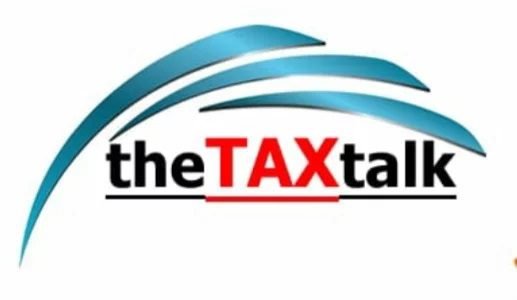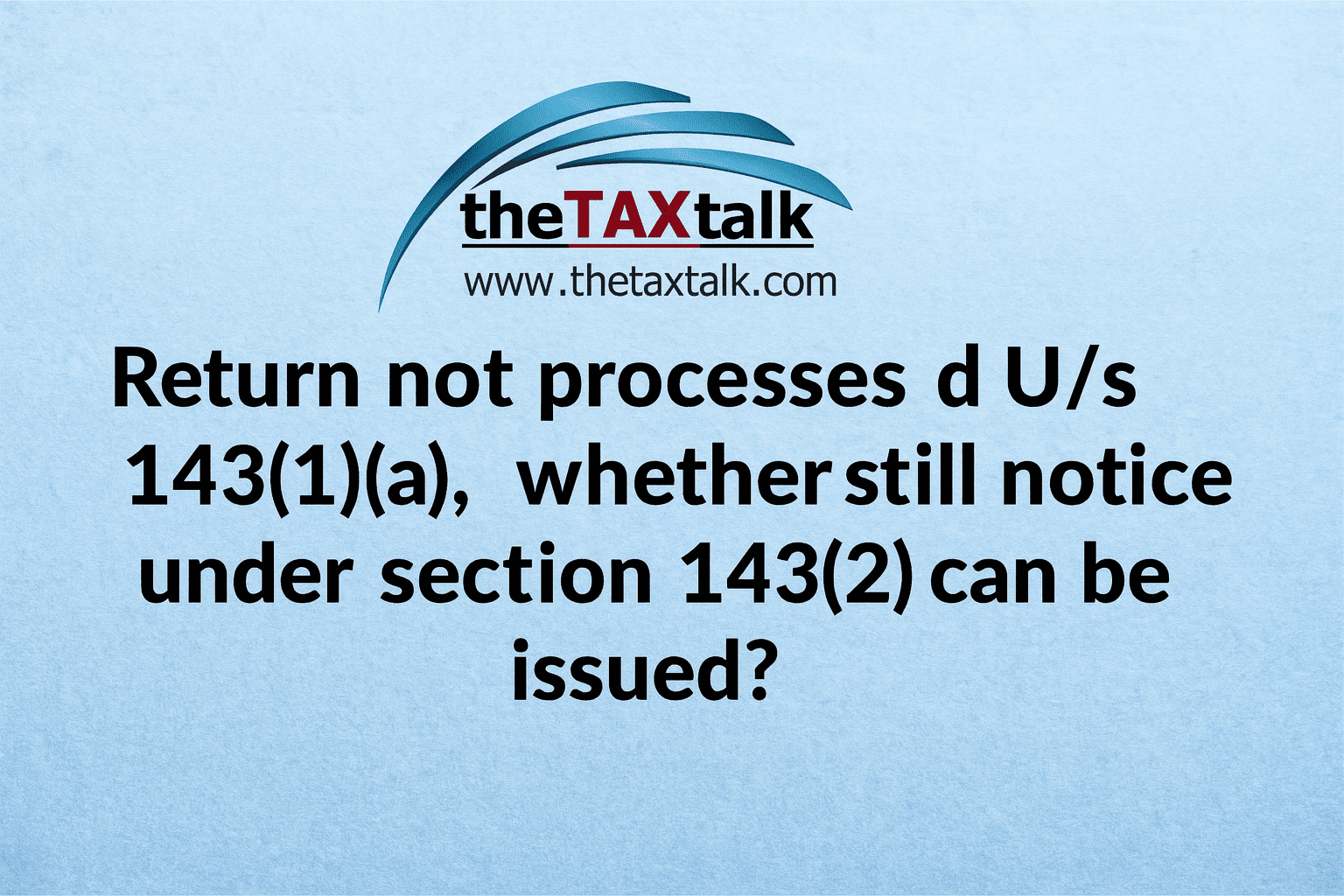![]()
Return not processed U/s 143(1)(a), whether still notice under section 143(2) can be issued?
As per section 143(2), notice has to be issued within 3 months from the end of the relevant assessment year. As per section 143(1)(a), ITR processing has to be done within 9 months from the end of the relevant assessment year. How can it happen that the income tax department issue notice under section 143(2) without processing it U/s 143(1)(a)?
The question arises as to whether if the Return is not processed U/s 143(1)(a), whether still notice under section 143(2) can be issued?
The key is to understand that processing under section 143(1) and issuing a scrutiny notice under section 143(2) are two separate and independent actions under the Income Tax Act.
1. The timelines are different
•143(2) → Notice for scrutiny assessment (limited/special/complete scrutiny)
• Deadline: 3 months from the end of the relevant AY.
• Example: AY 2024–25 ends on 31 March 2025 → 143(2) must be issued by 30 June 2025.
• 143(1) → Intimation after processing ITR (mathematical checks, mismatch corrections, etc.)
• Deadline: 9 months from the end of the relevant AY.
• For AY 2024–25 → due by 31 December 2025.
2. Why 143(2) can be issued before 143(1) is completed
• 143(2) is about selection for scrutiny, not about agreeing or disagreeing with the 143(1) processing results.
• The law does not require that processing under 143(1) be completed before issuing a 143(2) notice.
• In fact, CBDT systems are designed to allow scrutiny selection in parallel with processing — especially for cases flagged by risk parameters or AI-based alerts.
• If the department waited for 143(1) processing to finish, it might miss the 3-month statutory window for issuing the scrutiny notice.
3. What usually happens in practice
1. ITR is filed.
2. Case gets selected for scrutiny (via risk-based parameters or random selection).
3. 143(2) notice is issued before 30 June of the next FY.
4. 143(1) processing may still be pending, and may even be completed after scrutiny proceedings start.
5. Ultimately, scrutiny assessment under 143(3)will override any 143(1) intimation.
Key takeaway:
Processing under 143(1) is an automated preliminary step. Scrutiny under 143(2) is a manual investigative step. Law allows them to run independently, and 143(2) do not need to “wait” for 143(1).
Another question by one tax consultant was as under:
“Don’t you think that now whether it’s 143(2) within 3 months from the end of the assessment year or section 148 notice within 3 years, both are same. Now, there is no concept of “income escaping assessment” for section 148 notice within 3 years. It is only on the basis of information. So, indirectly 148 can also be done in same cases? Am I right?”
Let us check this one too.
What the 2024 Amendments Changed
Section 148A (Pre-Notice Inquiry)
•Previously, 148A mandated a mandatory preliminary inquiry before issuing a notice under Section 148 — giving the assessee the opportunity to respond before the AO proceeded.
•The 2024 law streamlined this process significantly. In cases where re-opening is based on information received from faceless authorities, the requirement to issue a notice under Section 148A is waived — allowing the AO to proceed directly with a Section 148 notice.
Time Limits for Reassessment
• The amendments also tighten the permissible window for issuing a Section 148 notice:
• No notice can be issued after 3 years and 3 months from the end of the relevant assessment year, unless:
• The AO has books, documents, or evidence showing income escaping assessment of ₹50 Lakh or more, which extends the window to 5 years and 3 months.
Another important question now emerges is whether Section 148 Now Really Overlap with Section 143(2)?
While it may appear that the post-2024 reassessment tools can fill the same role as 143(2) scrutiny (given the shared reliance on flagged information and tighter timelines), there are important distinctions:
| Feature | Section 143(2) | Section 148 (Post-2024) |
| Trigger | Risk-based selection within 3 months | “Information” based, may bypass 148A if from faceless authorities |
| Mandatory Pre-Inquiry | Not applicable | Generally required (148A), but waived for faceless authority cases |
| Time Limit | 3 months from end of AY | 3 years 3 months (or 5 years 3 months for ₹50L+ cases) |
| Purpose | First-time scrutiny | Reassessment of past years—not a substitute for standard scrutiny |
Even in the updated framework, 148 cannot fully replace 143(2). The 148 mechanism is still aimed at reopening and reassessing earlier assessments or returns—not conducting an original scrutiny of a filed return. Its scope, timeline, and procedural basis remain distinct.
Conclusion
• The 2024 amendments have indeed made Section 148 a more streamlined and limited tool, especially by allowing bypass of 148A in select cases.
• But it’s not equivalent to Section 143(2). Scrutiny under 143(2) remains a separate statutory mechanism, with its own purpose, shorter timeline, and procedural structure.
• In essence, while the tools now share some procedural convergence, they remain legally discrete.


